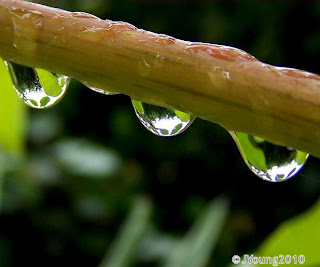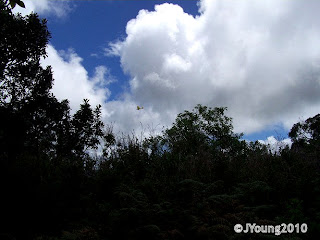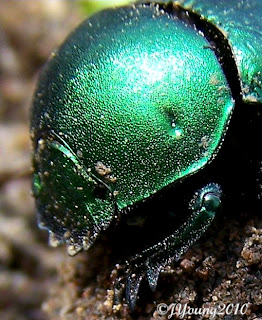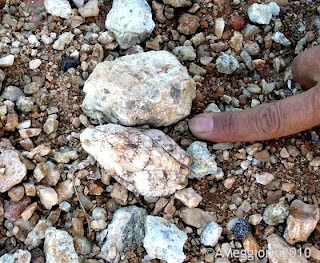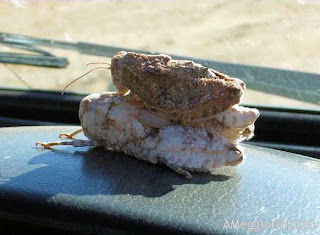We have three species of hyena in South Africa of which the Spotted Hyena is the largest. Second in size is the Brown and smallest the Striped.
Spotted Hyena
Spotted Hyenas are famed scavengers and often dine on the leftovers of other predators. But these hardy beasts are also skilled hunters that will take down wildebeest or antelope. They also kill and eat birds, lizards, snakes, and insects.
In an increasingly overpopulated Africa, hyenas and humans come into frequent contact. In fact, the Maasai people of Kenya and Tanzania actually leave their dead to be consumed by hyenas. However, these intelligent and bold animals will raid food stores and crops and are blamed for many livestock and even some human deaths. In some areas they have been heavily hunted as destructive pests.

Although hyenas appear similar to dogs, they are actually more closely related to cats. They live throughout much of Africa and eastwards through Arabia to India. Spotted hyenas live together in large groups called clans that may include up 80 individuals and are led by females.
Spotted hyenas have good hearing and sharp eyesight at night. They are fast and can run for long distances without tiring. Packs work together effectively to isolate a herd animal, sometimes one that is ill or infirm, and pursue it to the death. The victors often squabble over the spoils, either among themselves or with other powerful animals like lions.
Spotted hyenas are quite vocal and make a wide variety of sounds, including the "laughing" that has long been associated with their name. They can live in the wild up to 25 years.
 Brown Hyena
Brown Hyena (please excuse the bad pictures but they are from older slides)
Brown Hyena are fairly solitary animal and mainly active at night. They have an excellent sense of smell which assists them in finding carrion. They have very powerful jaws and large strong teeth for crunching through bone which can be seen in the photographs below. Males are slightly larger than females with the average weights being 40.2 Kg for males and 37.7 Kg for females.

They are well adapted to live in arid regions where there are few herbivores. They have very keen senses, they are able to detect a carcass from considerable distances, and are able to run at high speeds for long distances to get to the carcass before other scavengers. As well as scavenging off carcasses, they will also eat fruit (e.g. Tsama or gemsbok cucumber), insects (e.g. locusts, harvester termites and dung beetles), eggs (e.g. ostrich eggs), and will prey on small animals such as rodents, lizards and poultry. When they come across an ostrich nest containing eggs the brown hyena is able to bite the eggs open even though it has slightly less powerful jaws than the spotted hyena which has to kick an egg till it hits one of the other eggs hard enough to break it open so it can consume the egg.
When not at the den, the brown Hyenas are generally solitary.
 Striped Hyena
Striped Hyena
Unlike Spotted Hyena, Striped Hyena tend to be more solitary, foraging alone for food, but they are believed to share a communal den for raising cubs, and possibly at other times although little is known about this. They have a slender build which allows it to travel long distances when foraging - they are able to trot for up to 8 hours a night covering distances of up to 30Km.
In areas where both Striped Hyena and Spotted Hyena are found, the Spotted Hyena are dominant and will steal food from the Striped Hyena. They eat a range of small mammals such as hares or rodents, as well as reptiles and insects including tortoises, grasshoppers and termites. They also eat fruits such as date palms and scavenge from rubbish dumps.

Female Striped Hyena give birth to a litter of 2-4 cubs after a gestation period of around 90 days. The cubs are usually born in a rocky den or a vacant burrow dug by another species. In some areas the Striped Hyena tends to gives birth at particular times of the year but in other areas there is no pattern to their reproduction.
Striped Hyena are found throughout North and East Africa as well as the middle East and parts of India. They live mainly in arid areas including open savannah and rocky slopes, In some areas Striped Hyena are found on the coast.

The
Aardwolf is a close relative of the hyena but is much smaller, about the size of a jackal or coyote and more dog-like in appearance.
It is a very specialized predator, with a diet that is made up almost exclusively of termites. The termites are located by smell and hearing when they are out of their mounds and the aardwolf then uses its long sticky tongue to lick them up from the ground. An aardwolf can eat up to 300,000 termites in a single night. They occasionally eat other insects, birds or mice.
The Aardwolf does not kill livestock - its molar teeth are not suited to a carnivorous diet. Its canines are used purely for defense if they are unable to scare their enemy away.
The aardwolf is normally nocturnal, but in the southern African summer, it is active during the day when its main prey sources are active.

When threatened, they raise the mane of hair on their neck and back to make themselves look a lot bigger. The Aardwolf does not kill livestock, but because of its resemblance to a hyena it is often assumed to be a threat to livestock and is therefore unfairly persecuted. They also fall victims to farmers who hunt jackals with packs of dogs as the dogs will also attack and kill the aardwolf.
The aardwolf is a good digger and either digs its own burrow or modifies one left behind by another species. It has 4 digits on each of its hind paws and 5 on each of its front paws. These digits are equipped with strong claws which are used when digging.
The aardwolf is generally solitary except when mating or raising young.
Apart from humans, the main threats to the aardwolf come from spotted hyenas, lions, leopards and pythons.

 I wanted to see how many song I could find with the word "rain" or "raindrops" in them and these were a few I came across. I must admit that I have not heard half of them!!
I wanted to see how many song I could find with the word "rain" or "raindrops" in them and these were a few I came across. I must admit that I have not heard half of them!!
